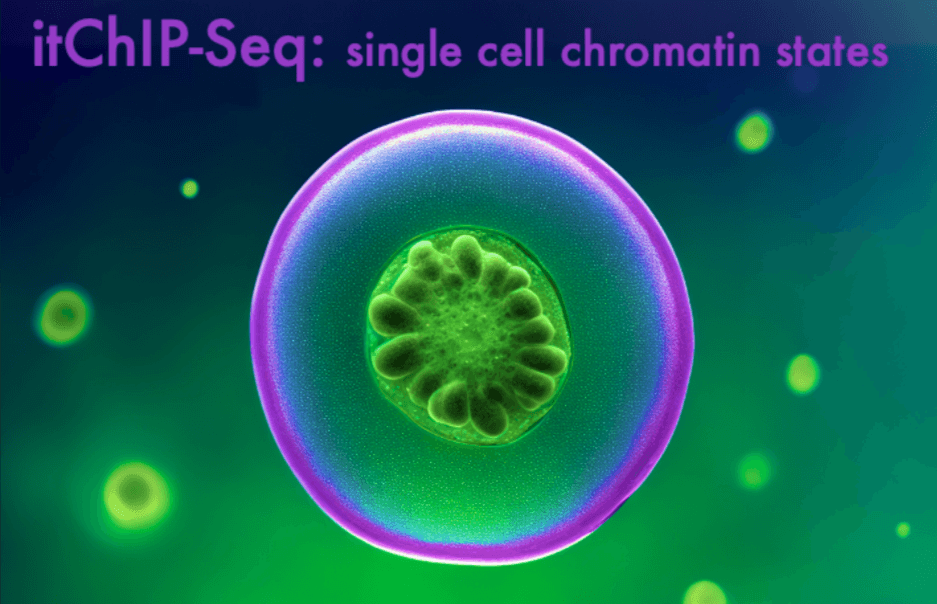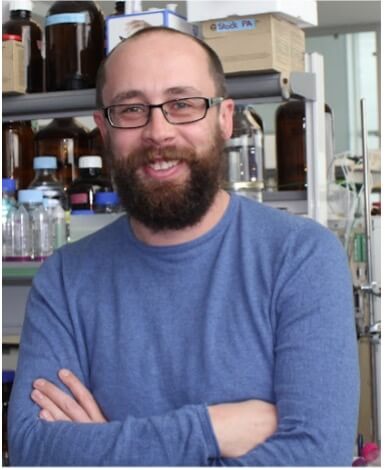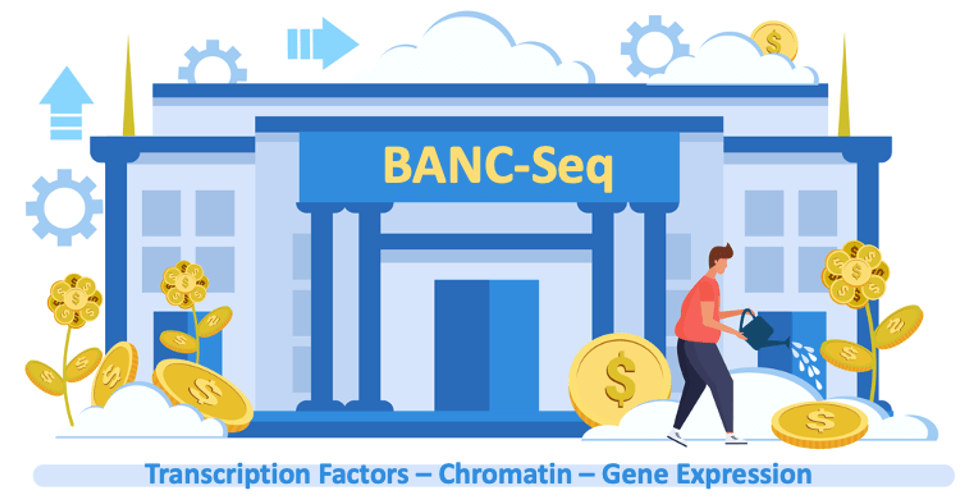<< Back to MOTIFvations Blog Home Page
The Latest ChIP Tip – How to Measure Single-cell Chromatin States with itChIP-Seq

March 26, 2025
Table of Contents:
Introduction: The Challenge – Single-cell Measurements of Chromatin States
Profiling chromatin states involves the detection of specific combinations of modified histone proteins, histone regulators, and transcription factors (Rivera & Ren and Roh et al.), which usually involves the application of chromatin immunoprecipitation and subsequent parallel sequencing (ChIP-Seq) (Kharchenko et al.). The desire to shift the analytical focus from bulk samples to single cells has prompted multiple technical innovations in recent years; however, a widely applicable, low-cost, and robust single-cell/low-cell input ChIP-Seq methodology had remained undescribed.
Researchers from the laboratory of Aibin He (Peking University) sought to solve this problem through their report of indexing and tagmentation-based ChIP-Seq or itChIP-Seq - a low-cost, straightforward, and efficient chromatin profiling method suitable for low cell number (low-input itChIP-Seq) and single cell (sc-itChIP-Seq) input (Ai et al.). The combination of multiple processes within a single tube enables itChIP-Seq to process rare low-number cell populations and high-volume single-cell samples; meanwhile, itChIP-Seq does not require specialized devices (e.g., microfluidics) and, as such, remains widely applicable and affordable in most laboratory settings.
Developing and Applying Low-input itChIP-Seq
itChIPseq involves Tn5 transposase-based tagmentation, which involves chromatin fragmentation coupled with the simultaneous addition of primers for barcoding and amplification (Schmidl et al.), and the introduction of barcoded adaptors into in situ cells that undergo lysis to start the ChIP process. Incorporating multiple critical steps in a single tube avoids sample loss; this includes sodium dodecyl sulfate-enhanced genome-wide chromatin opening at high temperatures, which avoids the disruption of protein-DNA binding and ensures homogeneous, unbiased tagmentation.
Ai et al. optimized critical parameters while evaluating the gene expression-/accessible chromatin-associated histone modification H3K4me3 in samples of 100–10,000 murine embryonic stem cells (ESCs) toward the development of low-cell input itChIP-Seq, including genome fragmentation and chromatin solubilization/release. Encouragingly, low-cell input itChIP-Seq functioned as well as bulk ChIP-Seq when evaluating H3K4me3-occupied regions, afforded robust library complexity (Daley and Smith), and displayed high accuracy. The authors also provided proof for the broad applicability of low-input itChIP-Seq for profiling the binding of non-histone proteins (including RNA polymerase II and EZH2) and gene repression-/inaccessible chromatin-associated histone modifications (H3K27me3).
Developing and Applying sc-itChIP-Seq
The authors then developed sc-itChIP-Seq, taking inspiration from a combinatorial dual-indexing strategy for high-throughput single-cell genomic sequencing (Amini et al. and Vitak et al.). A single-tube reaction for simultaneous cellular indexing and chromatin tagmentation avoided sample loss before the immunoprecipitation of pooled and indexed chromatin from single cells. sc-itChIP-Seq employed Tn5 complexes with different combinations of barcodes in a 96-well plate setup (one cell per well) before tagmentation followed by a minimally modified low-input itChIP-Seq protocol and next-generation sequencing.
The team provided proof of function of sc-itChIP-Seq by evaluating levels of the active enhancer-associated histone modification H3K27ac in an artificial mixture of ESCs and epiblast-like cells (EpiLCs), which can readily differentiate to form derivatives of three germ layers (Kurimoto et al.). Overall, sc-itChIP-Seq yielded ~9,000 unique reads per cell (close to that of single-cell ATAC-Seq assays), which sufficed to capture the earliest epigenetic priming events during the cell fate transition from the naive state of ESCs to the primed pluripotent state of EpiLCs. Furthermore, these results provided evidence that sc-itChIP-Seq functioned better than other comparable single-cell genomic approaches and delivered highly reproducible results.
The authors then described another advance toward cost-effectiveness and widespread applicability by modifying the process to support compatibility with the standard Tru-Seq sequencing workflow, thereby eliminating potential roadblocks associated with the need for non-specialist researchers to apply custom sequencing recipes and substantially reducing library construction costs. This modification applied to both low-input itChIP-Seq and sc-itChIP-Seq and permitted the construction of libraries ready for sequencing employing the standard Illumina sequencing workflow, thereby reducing the costs by around 15-fold.
Finally, the team applied sc-itChIP-Seq to tissue samples limited by low cell numbers; here, they employed sc-itChIP-Seq to detect H3K27ac (alongside scRNA-Seq) to reveal the basis for cell-type specific enhancer usage during the differentiation of multipotent cardiac progenitor cells into endothelial cells and cardiomyocytes (Wu et al. and Stanley et al.). This low-cell input approach offered biological insight into how the coordination of lineage-specific enhancer usage-controlled cell-fate-specific transcription programs at single-cell resolution during progenitor cell differentiation.
itChIP-Seq: The Way Forward for Chromatin Profiling?
These results highlighted itChIP-Seq as a simple, cost-effective, and widely applicable technology for chromatin profiling in heterogeneous cell populations that can be scaled to ultra-low cell and single-cell inputs. Indeed, the sc-itChIP platform represents an exciting means of understanding the epigenetic basis of cell-to-cell variability in highly heterogeneous cell types of complex tissues. What can itChIP-Seq do for your research?
For more on how itChIP-Seq provides a simple and effective platform for measuring single-cell chromatin states, see Nature Cell Biology, September 2019.
About the author

Stuart P. Atkinson, Ph.D.
Stuart was born and grew up in the idyllic town of Lanark (Scotland). He later studied biochemistry at the University of Strathclyde in Glasgow (Scotland) before gaining his Ph.D. in medical oncology; his thesis described the epigenetic regulation of the telomerase gene promoters in cancer cells. Following Post-doctoral stays in Newcastle (England) and Valencia (Spain) where his varied research aims included the exploration of epigenetics in embryonic and induced pluripotent stem cells, Stuart moved into project management and scientific writing/editing where his current interests include polymer chemistry, cancer research, regenerative medicine, and epigenetics. While not glued to his laptop, Stuart enjoys exploring the Spanish mountains and coastlines (and everywhere in between) and the food and drink that it provides!
Contact Stuart on X with any questions
Related Articles
FloChIP: A Quick and Easy ChIP-Seq Technique That Makes Epigenetics Go with the Flow
April 15, 2024
Do you want to go with the 'FloChIP'? Researchers from École Polytechnique Fédérale de Lausanne now report on a flexible, reproducible, and automated microfluidic ChIP platform that facilitates epigenetics experiments by improving protocol speed, reducing costs, and maintaining sensitivity!
Read More
Invest in BANC-Seq, a New Method to Analyze Transcription Factor Binding to Chromatin
August 27, 2024
Binding affinities to native chromatin by sequencing (BANC-Seq) represents a fast, sure-fire method to measure transcription factor binding affinities for chromatin, incorporating binding affinity data when investigating gene regulation.
Read More
<< Back to MOTIFvations Blog Home Page








